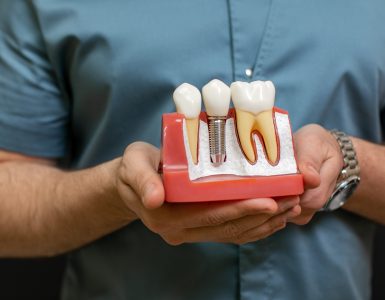More and more people are turning to teeth whitening as a great way to improve their smile, enhance their appearance, look younger and gain confidence.
Why aren’t my teeth white?
With increased popularity for teeth whitening, you may wonder why your teeth aren’t naturally white. There can be many reasons why your smile may not be as white as you would like. Teeth can naturally range in colour from off white to light yellow or light grey and still be perfectly healthy. It can be genetics, age and lifestyle factors that affect the enamel on your teeth causing yellowing and discolouration.
- Genetics. The soft layer in the tooth under the enamel is called dentin. This naturally has a yellowish hue, whilst the enamel is white. Some people’s enamel is naturally thinner or translucent allowing the yellowish dentin to show through. Those whose enamel is thicker will have teeth that look whiter.
- Age. General wear and tear on your teeth will cause the enamel to weaken over time, allowing more of the dentin to show through. This is why as we get older our teeth will tend to look more yellow.
- Plaque. This is a sticky layer that forms on your teeth caused by a build-up of bacteria. This can harden into tartar, if not removed by regular brushing and flossing, and is naturally a pale, yellow colour.
- Staining. What we eat and drink can have a big impact on the colour of our teeth. Drinks like red wine, coffee and tea, red sauces and curries, and other dark coloured liquids or foods contain colour pigments that can move into the upper layers of your teeth causing discolouration. Smoking can also cause significant staining to your teeth because of the nicotine and tar in the tobacco. These causes are known as extrinsic as they are caused from an outside source and damage the outer surface of the teeth. When the discolouration comes from within the tooth, such as through trauma or injury to the tooth, too much fluoride in childhood and certain medications these stains are intrinsic and it is the dentin inside the tooth that will darken or take on a different tinge.
Will whitening work on my teeth?
This will depend on what caused the stains and discolouration of your teeth and the results will differ depending on the person. Generally yellow teeth will bleach well, while the discolouration caused by medications, too much fluoride in childhood and teeth with brownish or grey tones are usually more resistant to the effects whitening treatments. Teeth whitening only works on your natural teeth and not on dental restoration materials such as veneers, bonding, crowns, implants or fillings. If you have had any of these procedures, teeth whitening may not be a suitable option for you, depending on the extent of your dental restorations.
How safe is teeth whitening?
As with anything, there is always a slight risk of damage of side effects. Your teeth or gums may temporarily feel more sensitive after being exposed to the bleaching agents. If you choose over the counter or at home whitening, it is important to follow the instructions correctly and use the correct strength and quantity of the bleaching agent. Improper use can cause damage to your teeth and gums and will affect the results. Used correctly by or under the guidance of a dentist, teeth whitening has been proven as 100% safe and effective.
It is important to consult your dentist about whether teeth whitening is safe for you and to check that your teeth and gums are in a good, healthy condition. You may be advised against it if:
- You have unusually sensitive teeth or gums
- You’re pregnant or breastfeeding
- You have gum disease (the roots are exposed)
- Your teeth enamel is damaged or your teeth are cracked or chipped
- You have decay present or a loose filling.
How does teeth whitening work?
While your tooth enamel is very tough, your teeth also have pores which means that any coloured substance or food that you put into your mouth can be absorbed by those pores and cause staining that won’t go away unless removed. Teeth whitening products contain either hydrogen peroxide or carbamide peroxide, which open up the pores of your teeth, absorbing into them and breaking down the molecular bonds that hold the stain’s together. This causes the stains to break into smaller pieces, and then pushing them out through the pores and removing them. Following treatment your teeth will naturally re-mineralise and rehydrate to recreate their protective layer and prevent damage.
What options are available for whitening your teeth?
A professional scale and clean with a hygienist removing plaque, tartar and surface staining from your teeth could make a difference to the colour of your teeth. Should you wish to pursue other whitening treatments, there are several different options available with varying levels of effectiveness.
- Over-the-counter. As teeth whitening increases in popularity, the range of store-bought products has also increased. Whitening toothpastes are available at supermarkets and pharmacies. These can remove surface stains on your teeth, but do not contain the peroxide based whitening agents and will only lighten your teeth a shade or two. There are also whitening gels and whitening strips. Stronger than toothpastes, these use a low concentration peroxide gel and can offer results that last a couple of weeks.
- At Home Whitening. Your dentist will take an impression of your teeth in order to create a whitening tray to fit your upper and lower teeth, and will provide you with the whitening gel so you can complete the whitening process at home. It is important to follow your dentist’s instructions on how to use them correctly. Using them regularly, you should notice a difference after about ten to fourteen days.
- In Chair Whitening. This is the most popular and effective option and can be completed in one visit with your dentist. Your dentist is able to utilise a stronger concentration of peroxide than available in at-home products and will ensure the whitening gel is professionally and safely administered. This method will provide you with much quicker and more long-lasting results.
And, of course, nothing beats maintaining good oral hygiene to help prevent staining and discolouration. Although not always possible to avoid, especially with naturally yellow teeth, it is always important to brush and floss regularly, drink plenty of water, watch what you eat and drink and have regular check-ups and a professional clean with your dentist.




